Kitchen
This room contains solutions for the following systems (notice that on phones, the table might only be displayed in landscape mode):
| System Type | Components |
|---|---|
| Lighting |
|
| Climate Control |
|
| Security |
|
| Security and Alarm |
|
| Pet Care |
|
| Appliances and food |
|
Description of the solutions in this room
Starting with lighting, this required some investigation into different possible solutions. The simplest to make smarter were lights in the kitchen ventilator, where the old bulbs could simply be replaced with E14 chandelier smart bulbs from respectively Philips Hue and IKEA Trådfri, see picture below.
Unfortunately, partly are these bulbs somewhat low in light levels and partly the cover in front of them gives them even less effect. After some back and forth, first trying some LED spots, we now have an IKEA Ormanäs light strip installed under the ventilator hood to supplement the original ventilator lighting, see picture below.

It got way more complicated for light sources where we had old-fashioned fluorescent tubes. This was the case for ceiling lights, in the form of a fixture with two such tubes (controlled by a wall switch) and two lighting fixtures underneath cabinets above the worktop, which we really wanted to control by timer. Also these were turned on/off using (separate) wall switches, with the added complexity that both fixtures have a power outlet used to connect various gadgets scattered across the worktop. Solutions investigated were:
Replacing the wall switches for the fixtures with either smart switches or using a Fibaro Single Switch behind the original switches, but with old T8 fluorescent tubes, the start-up load would be too large for this to work.
I considered replacing the T8 tubes with T5 LED tubes, which would be suitable for a smart switch/relay, but this would still leave the power outlets in the fixtures without power when the lights were turned off. Since we have devices connected to these outlets that should be on even with the lights off, this was not an ideal solution.
The solution we ended up with, though more expensive than the ones mentioned above, has worked very well; we installed lightstrips from Philips Hue, se pictures below (while keeping the old fixtures, without tubes, so that the power outlets can be used). I was initially uncertain whether the amount of light would be too weak compared with the old fluorescents, but that was completely unfounded; in fact we only run the lightstrips at 80% brightness. An added benefit was achieved by installing three strips, which added light to a section of the worktop previously not illuminated.
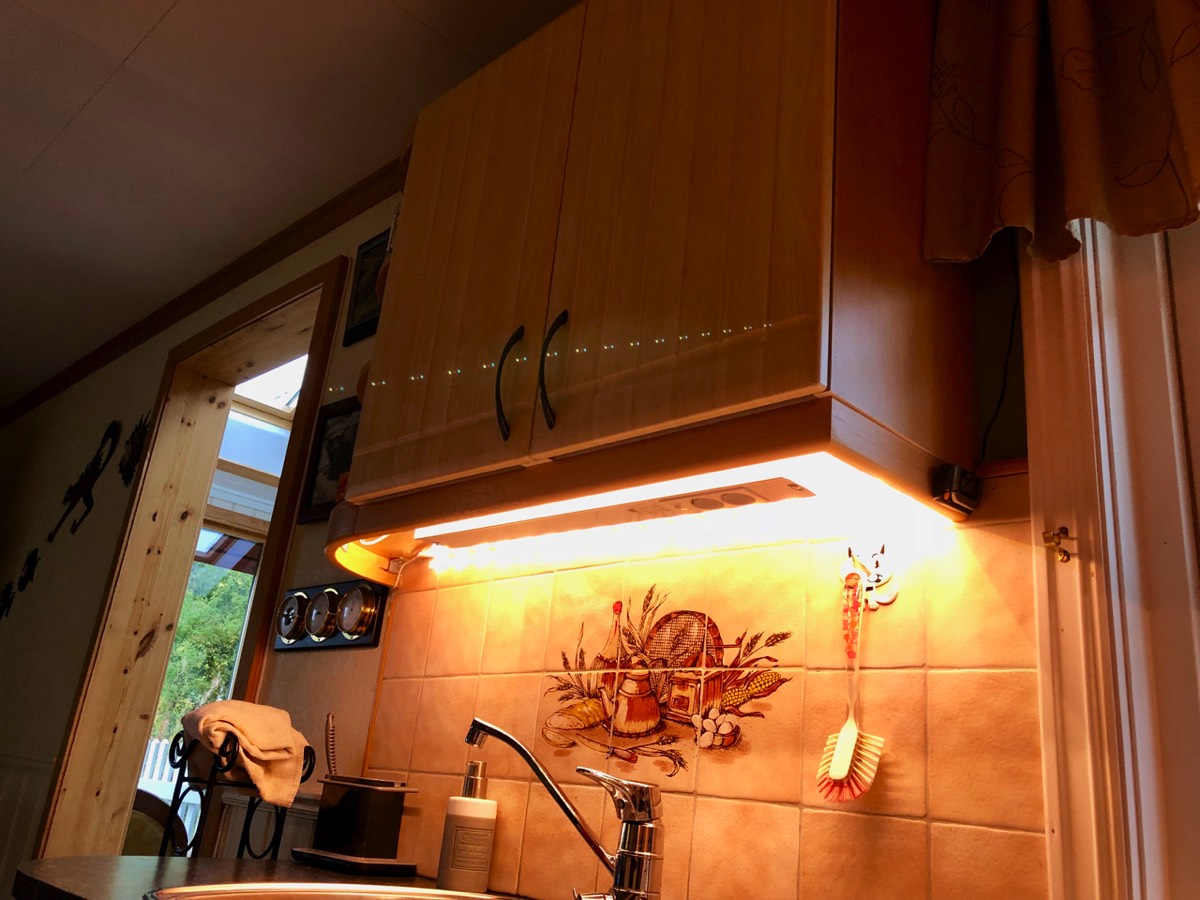
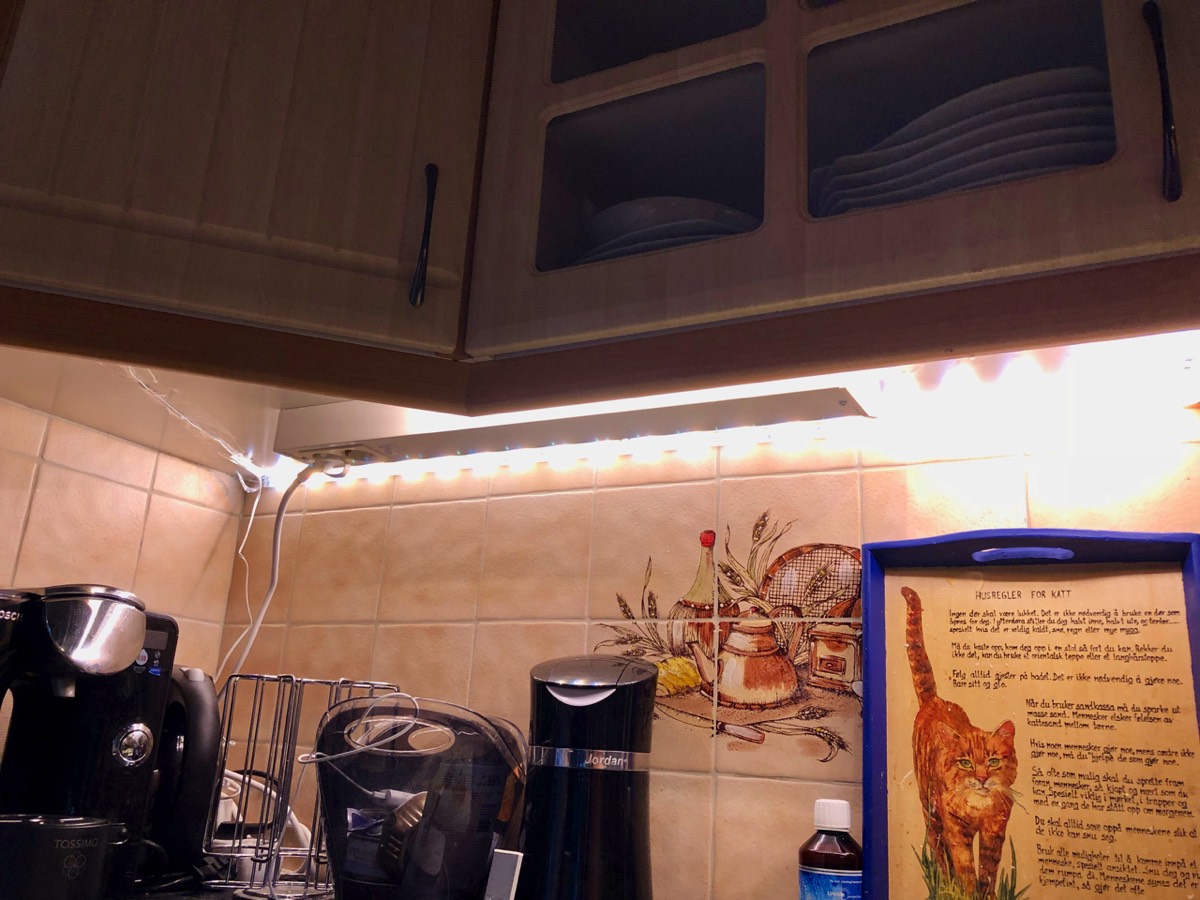
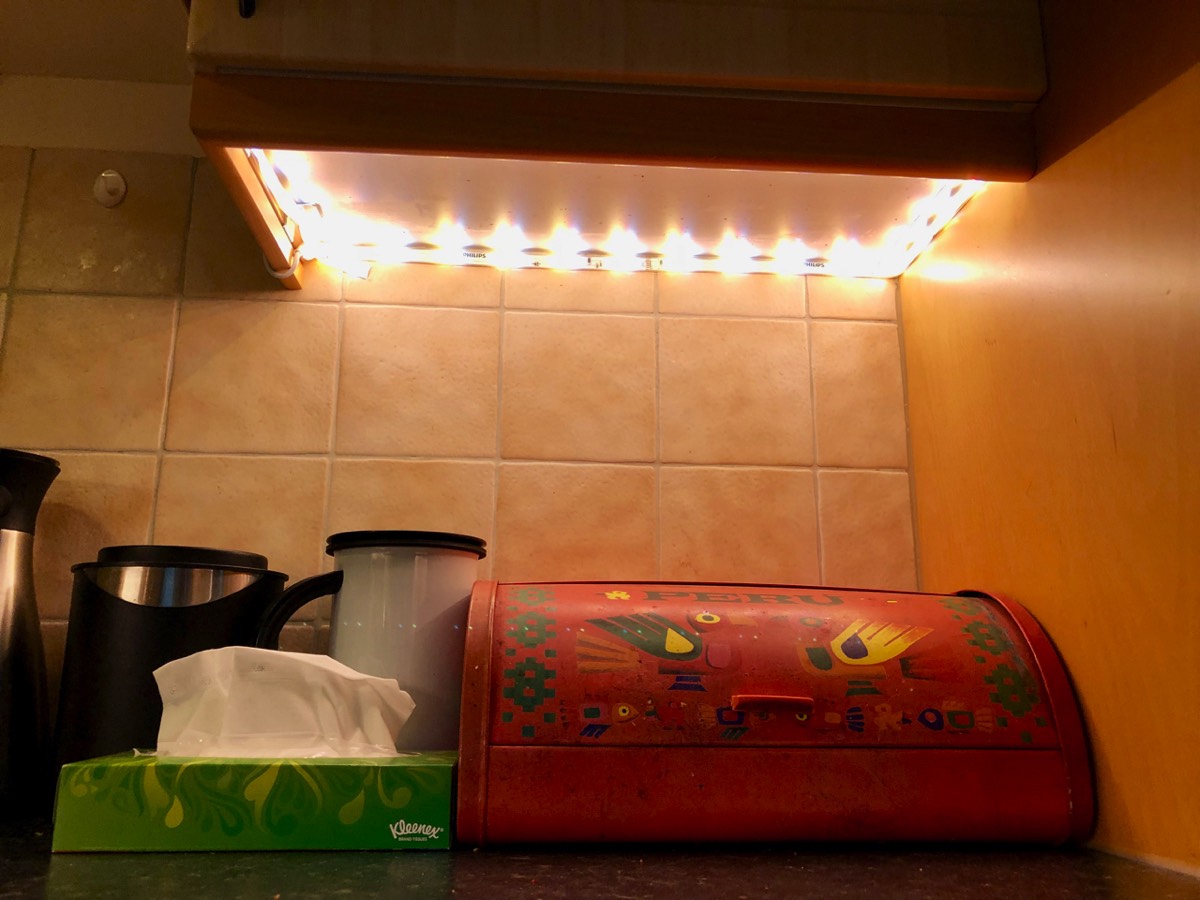
The three lightstrips installed underneath the kitchen cabinets. The strips 2 meters long which meant that in one place it didn’t reach all the way around the underside of the cabinet, in another place it was just perfect, and in the last place it had to be cut a little
The ceiling lights were for a long time left as they were, partly since there would be limited benefits from making this smarter and partly due to a lack of feasible solutions. As mentioned, fluorescent are demanding due to their high start-up load and no smart switches were suited for such. Later, Aqara has launched different versions of smart wall switches that can also handle this type of lights. Now, the fluorescent ceiling light is connected to one of the switches of a tripe Aqara wired wall switch, see picture below. This version is called S1E Magic Switch and has a LED display that can be “programmed” using different templates and up to nine individual “switches”; three that control the devices physically connected to the switch and six that control any device/scene in Apple Home. We have exploited this to assign often used devices/scenes to the maximum six virtual switches.
The other switch controls a ceiling lamp above the dining table, also shown in the picture below. Also this brings fairly limited benefits through automation, but since it was connected to the same existing wall switch, it “tagged along”, first using an old-fashioned light bulb. Later, Philips Hue (and other manufacturers) launched great-looking filament bulbs, and since the bulb in this ceiling lamp was extra large, we were tempted by the Philips Hue bulb G93 filament bulb with E27 socket. In the display of the wall switch, the physical switch for the lamp has not been added, as this would cut power to the smart bulb; instead the Hue bulb is controlled using one of the virtual switches, as shown below. For some of the virtual switches, Shortcuts have been programmed so that the light turns off if it was one when the switch was pressed and vice versa. It should also be mentioned that the display can either go into screensaver mode or go black after a given period.
Ceiling lamp above the dining table, with the old-fashioned bulb, and the ceiling fixture with fluorescent tubes
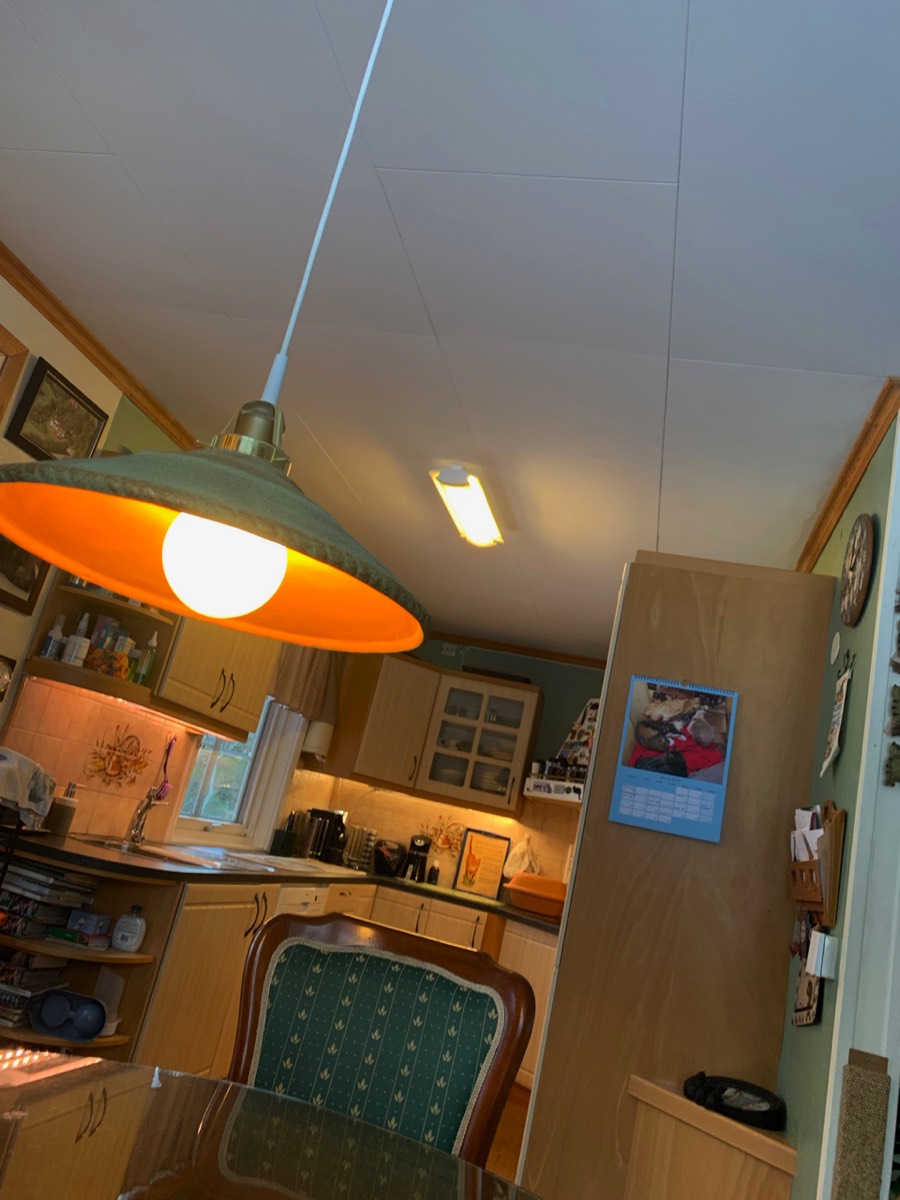
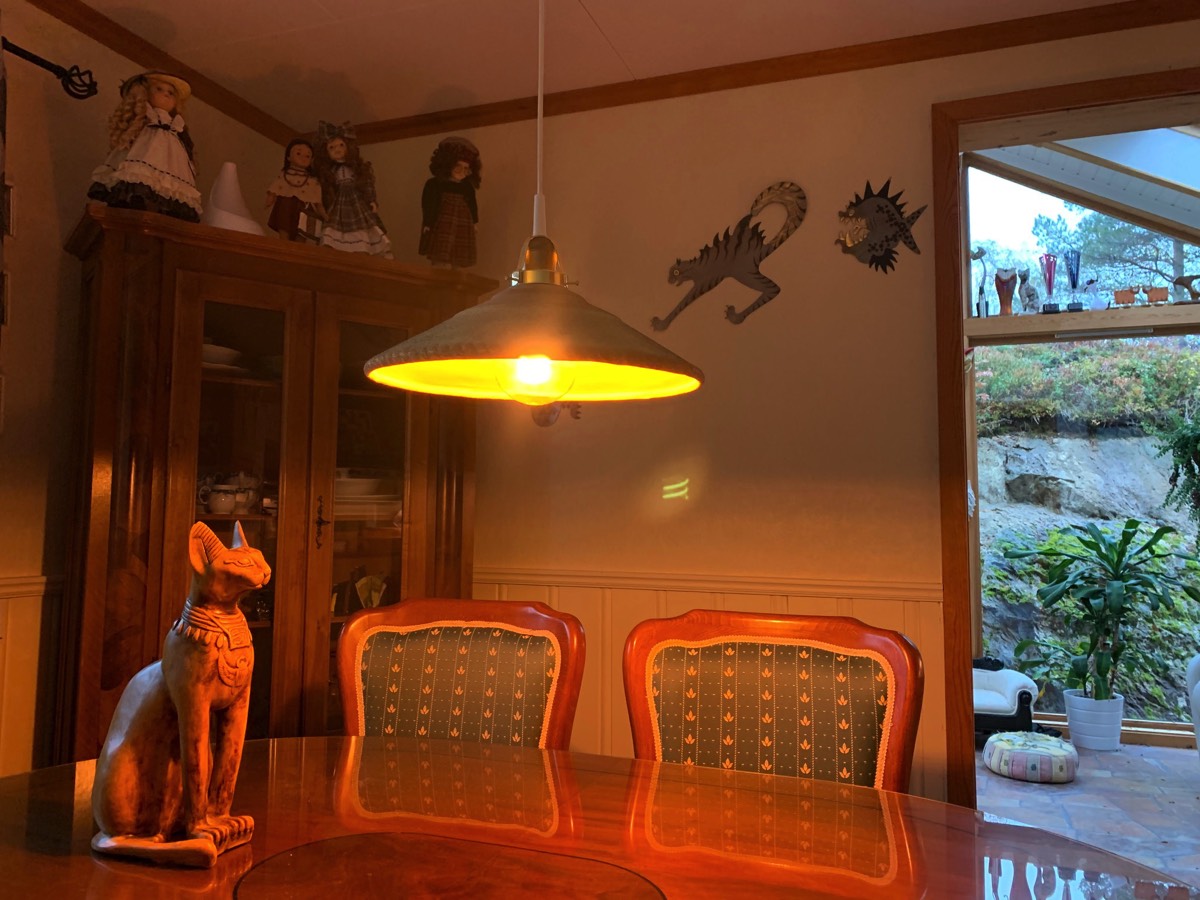
Dining table lamp with smart filament bulb (to the left) and to the right, the very flexible Aqara smart switch, programmed with seven “buttons”, one to turn on/off the physically connected ceiling light, the other six virtual switches
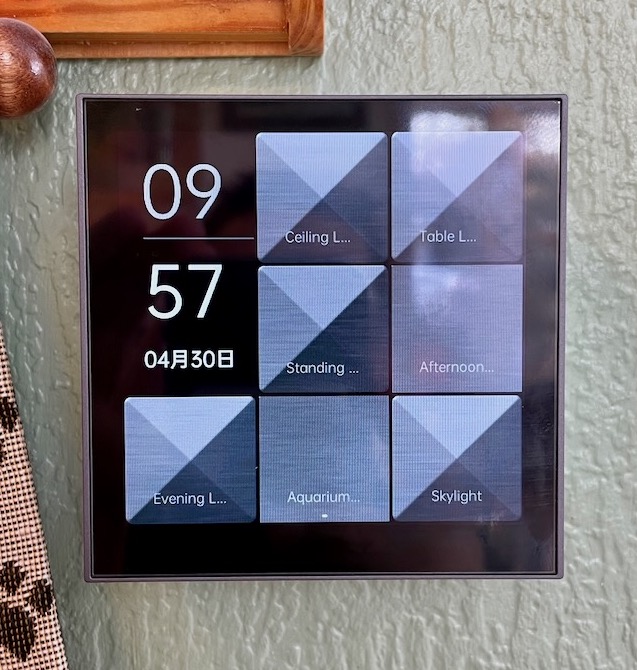
The experiences with the light strips, both here in the kitchen and in the living room, were so positive that we have been considering other places they could be suitable. In the kitchen, one area stood out; on top of the kitchen cabinets, and this also gave us an opportunity to test different types of light strips. We have tested both Yeelight’s Aurora Lightstrip Plus and Nanoleaf Essential Lightstrips, but both of these would not play very nice with our WiFi network and go offline. They were therefore replaced with IKEA Ormanäs light strips, which sit on top of the cabinets, see pictures below, and give a soft and discrete light to the otherwise rather gloomy area underneath the ceiling.
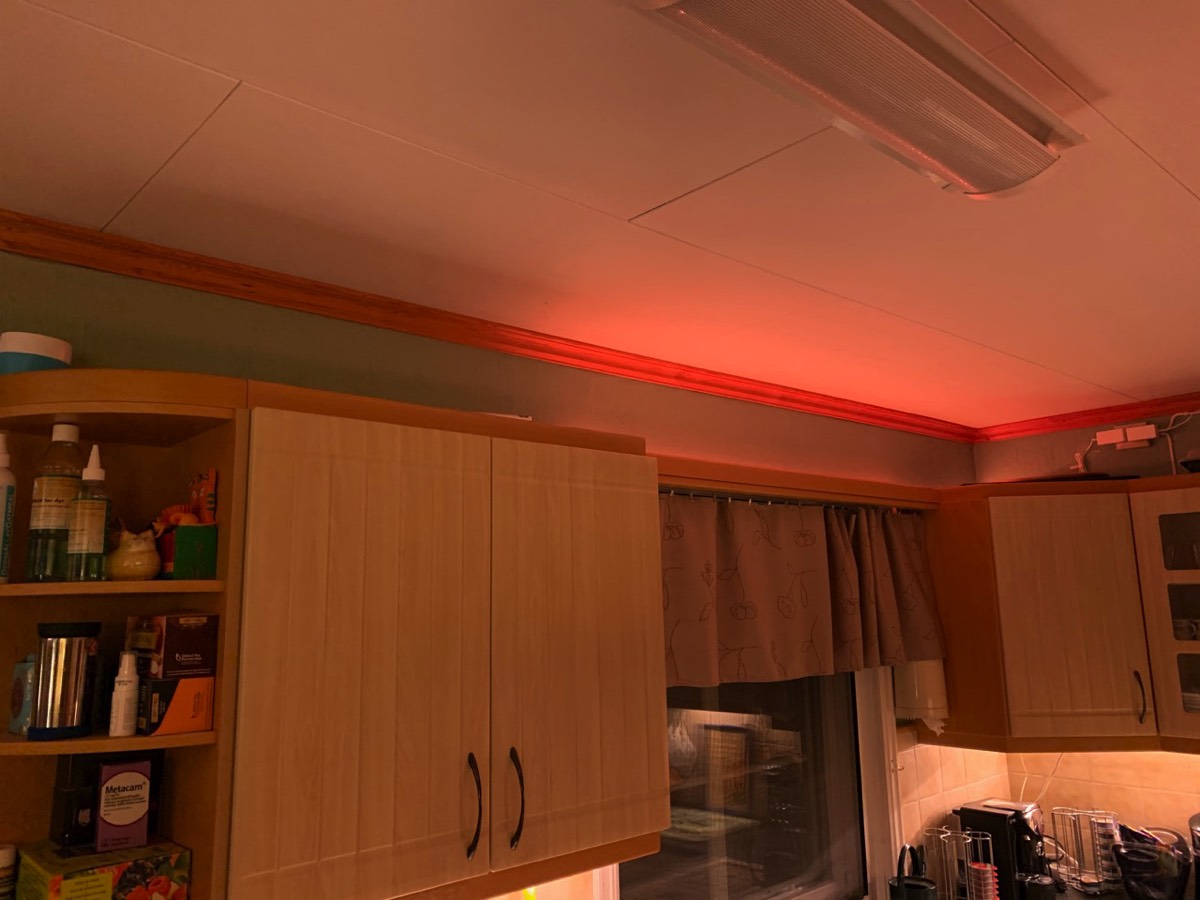
The IKEA light strips installed on top of the kitchen cabinets (everything looks a bit red in the pictures, but this is the camera being fooled)
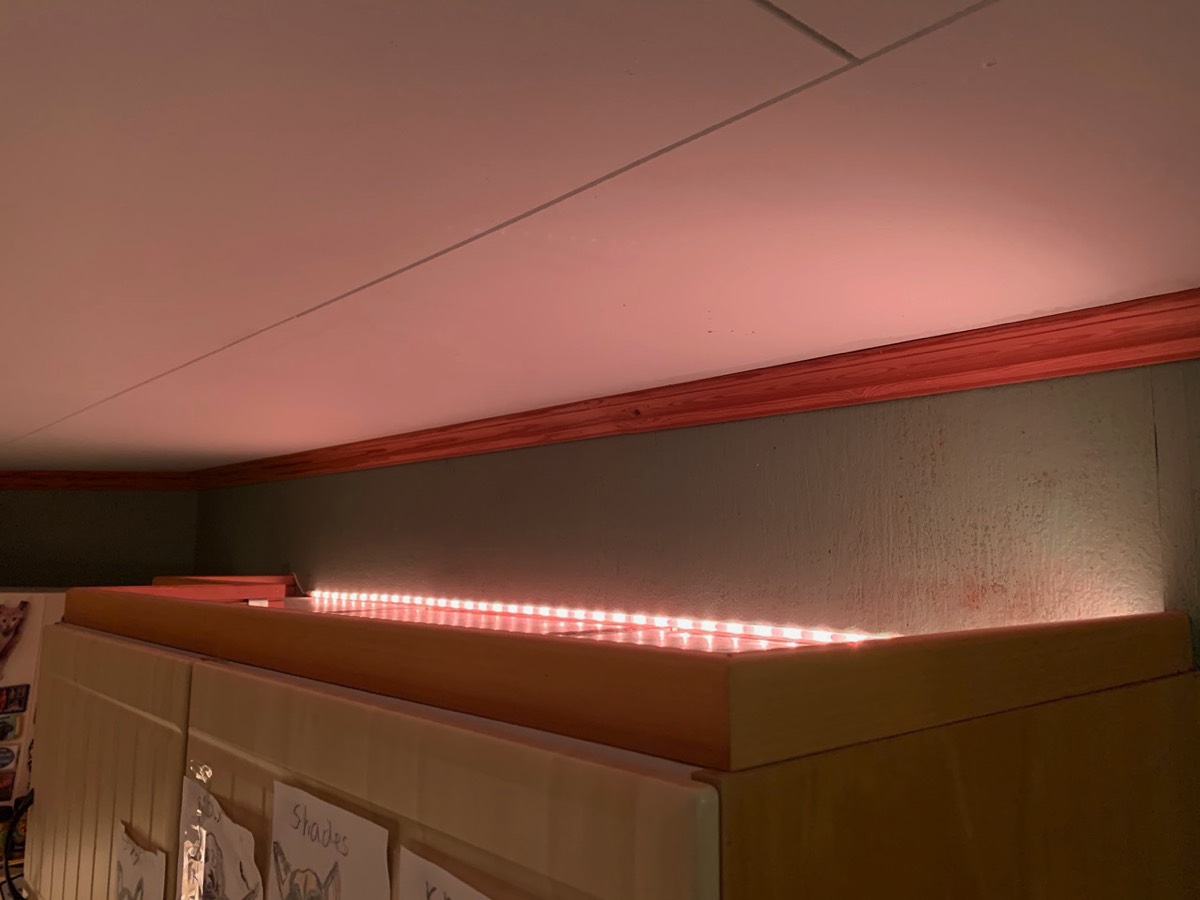
The lightstrips under and above the cabinets respectively are grouped together in the Home app so that they turn on/off at the same time and, together with ventilator lights and lamp above the dining table, they are programmed to turn on with the "Good Morning" scene and off at night with "Good Night", see screenshot at the bottom. We could of course have used a motion sensor to allow the lights to turn off when we are not in the kitchen, but with an open floor plan with the kitchen and living room being integrated, we decided it would look dark and gloomy in the kitchen that way. Equally, the two strips on top of the cabinets have been grouped together, but these turn on later with the “Evening Lights” scene, and all go off with “Good Night”.
IKEA offers a lot of lighting producs, most of which are not part of the Trådfri smart lights line, but which still have some “smarts”. In the two largest and most often used kitchen cabinet drawers, we have installed two IKEA Omlopp LED lights with built-in motion sensor in drawers, two of a newer model, MittLED, in two cabinets, and one Skydrag in another cabinet, see pictures below. These are easy to install if the body of the drawer section is of standard width and they work very well by turning on when the drawer or door is opened and off again when it is closed. These can be connected to power using either a “non-smart” transformer, which is the case for three of these, or a Trådfri Driver, which also integrates them into Apple Home, which one of these uses.
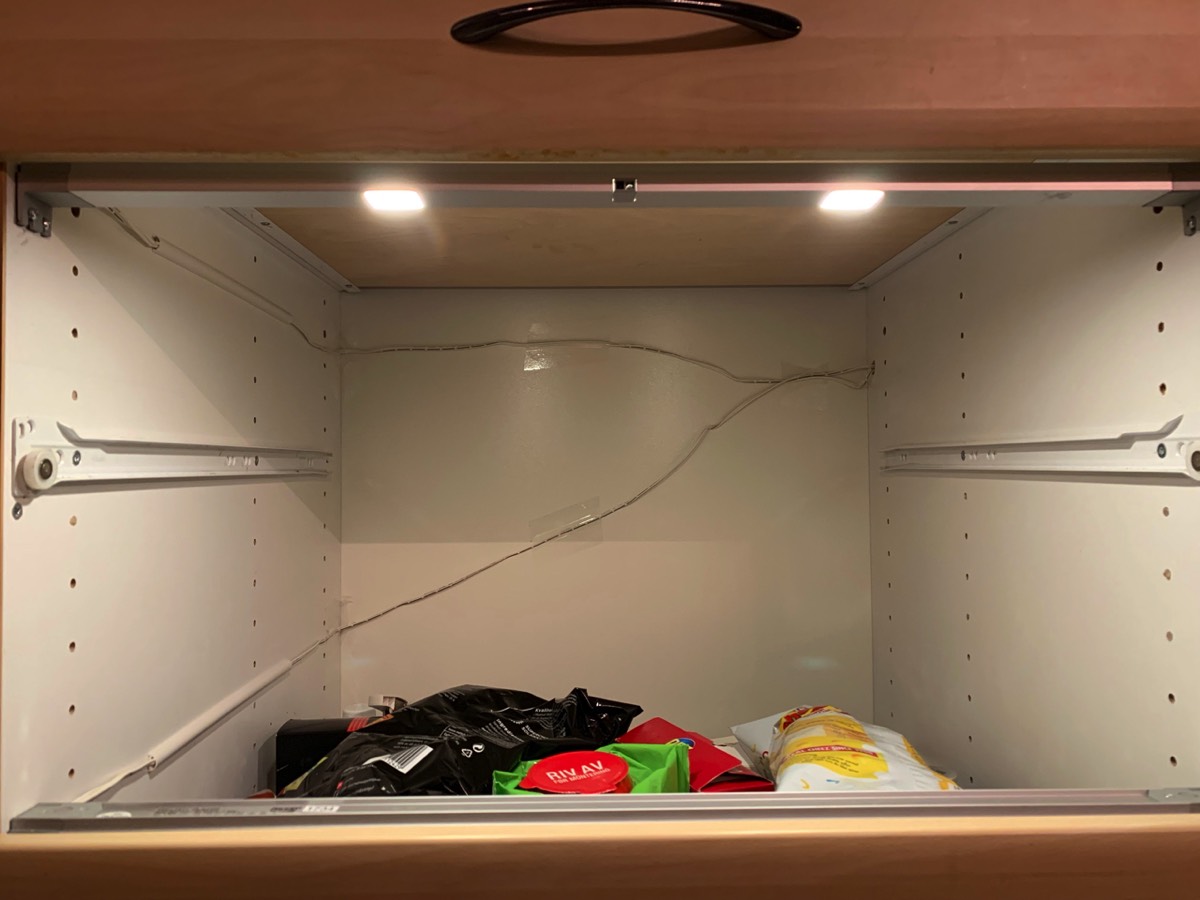
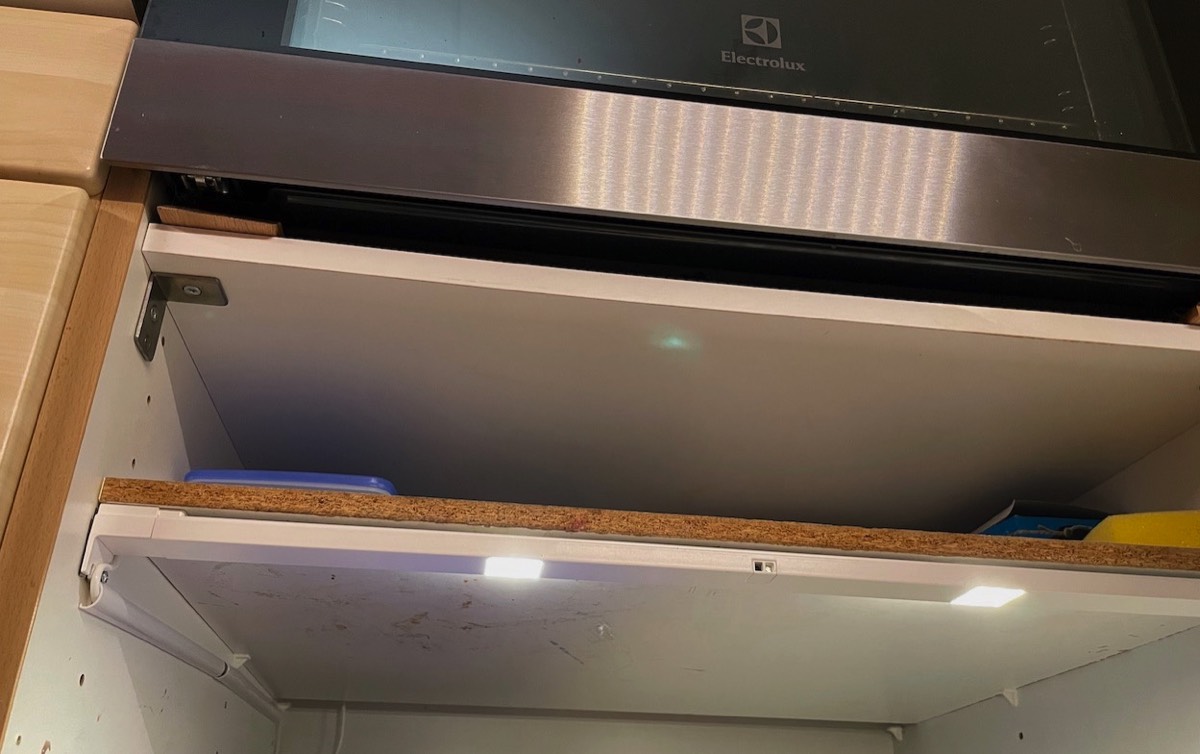
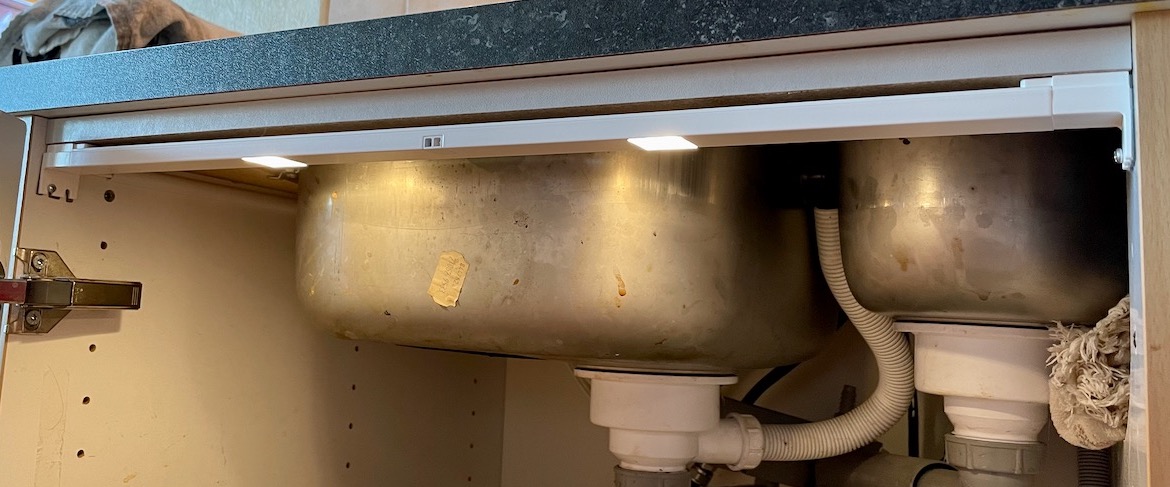

Omlopp drawer lights og MittLED cabinet lights
In addition, we have installed two lightstrips and one light panel powered by batteries in kitchen cabinets where the inner area gets a little dark. These are motion controlled so they turn on when opening the door and work well, though it can be a bit cumbersome to replace the batteries inside the cabinet.
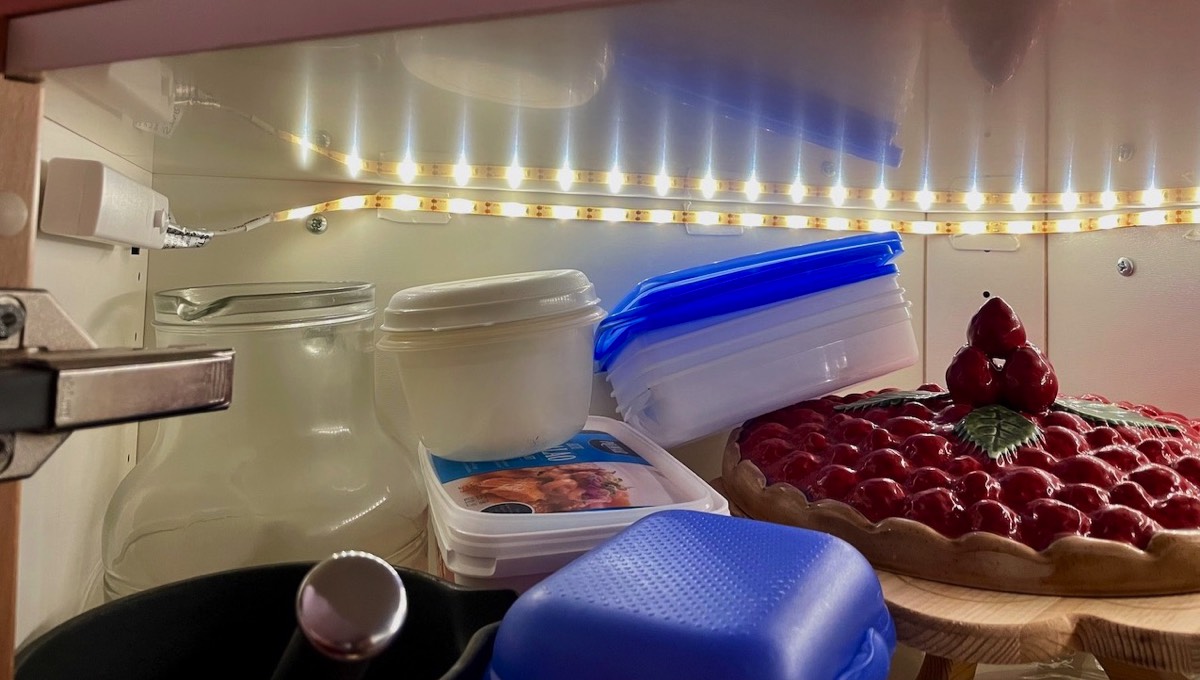
Lightstrips/light panel in a kitchen cabinets
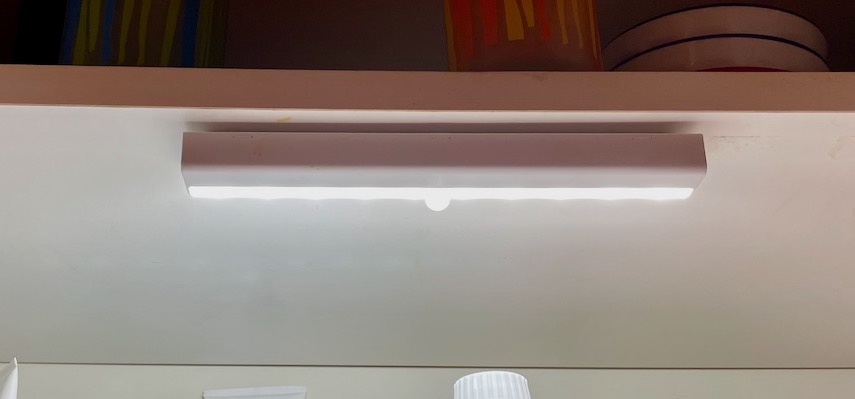
The window sensor from Aqara, see picture below, has as its primary function to be part of the programming of the living room heat pump. Together with door/window sensors in the living room, conservatory and the library, this has been set up so that the heat pump turns off when the window or one of the doors are opened.
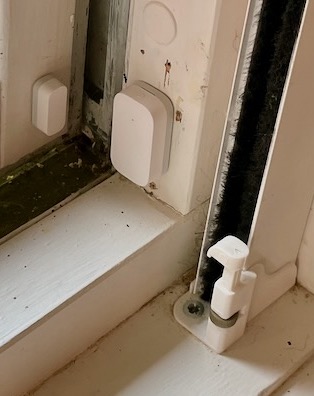
Smart pet water fountains and feeders are arguably more for those with a special interest in such things, but we did for a while have both a smart water fountain, a Petoneer Fresco Mini Plus, see picture below, and smart pet feeders. The water fountain, however, stopped working after a few weeks and has been removed - time will tell if a new model is acquired at some stage. Furthermore, we have four “smart” pet feeders from SureFeed, see picture below. We have several cats who require different types of food and it is not easy to control who gets what by other means. These feeders respons to the microchip that each cat has been injected with and will open only for the right cat. They are not online in any way and as such not very smart, but they work perfectly for our needs.

Left, Petoneer smart water fountain, now uninstalled, right SureFeed smart pet feeders
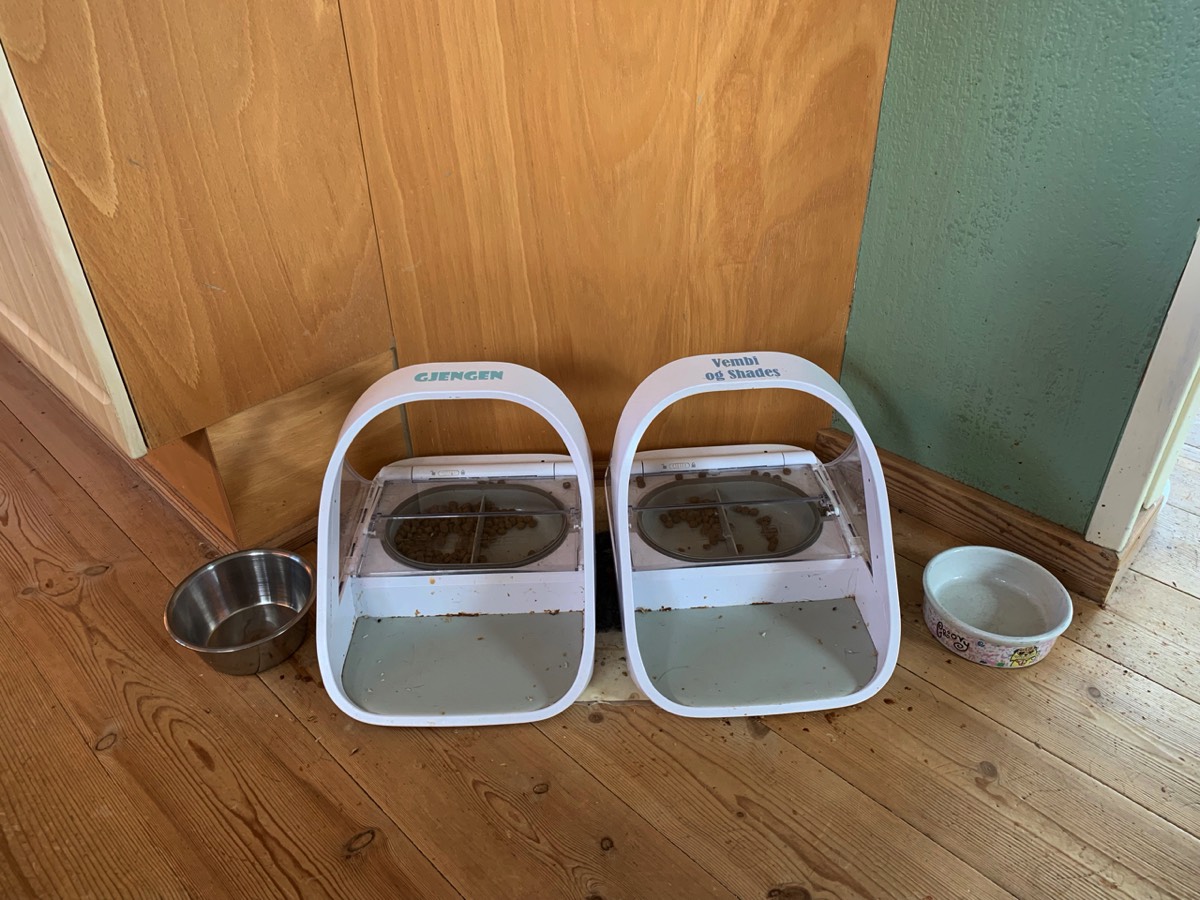
For a long time, we had a “non-smart” dishwasher, but when this packed it in after fifteen years of service, we naturally chose a smart version. We landed on a Bosch machine with its Home Connect solution for app control, with alternatives in the form of a plugin for Homebridge and an app for Homey. These alternatives do work in that they show the status of programs/door and one can start/stop programs, but we have found that in practice we either use the physical buttons on the machine or the Home Connect app. The most useful feature of having an online dishwasher is the ability to see remotely how much time remains before the current program is done.
The water connection for the dishwasher is in a cabinet next to the machine, and the water lock for the sink is also here. We have had a small leak from the water lock, due to too infrequent cleaning, so a small Aqara water leak sensor is placed here, see picture below.
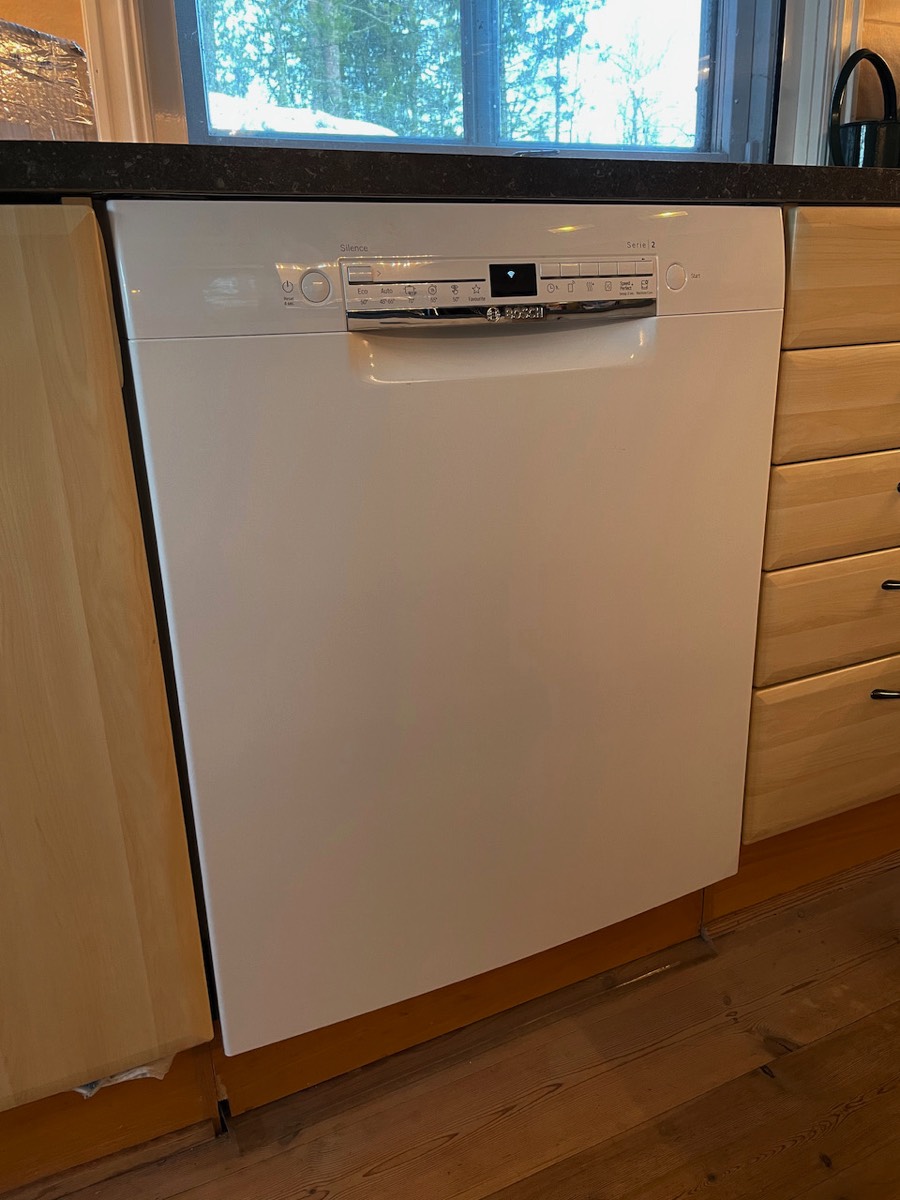
Bosch dishwasher with Home Connect to the left and Aqara leak sensor to the right

In Norway, it is mandatory to install a stove guard in new houses, but our house is too old for this requirement to apply. Still, it is clearly an important safety measure so we have installed a Namron guard, see picture below. This comes in some different versions, we have one where the control unit functions as a “smart plug” between the original power outlet and the power cable from the stove top, and with a wall sensor. It uses Zigbee and is supported by the Namron app on Homey, where various data from the control unit and the sensor is presented and the guard can be controlled. From there, it can even be exposed to Apple Home, but this only allows turning on/off the power to the stove top.

Left, the control unit in the cabinet underneath the stive top, right, the wall sensor installed in the ventilator hood above the stove top

As mentioned in the description of the living room, we changed our weather station to one from Ecowitt. The experiences with this, both in general and compared with the solution we had from Netatmo, were very good, with rock-solid connection and good integration with Home Assistant and from there to Apple Home. Here in the kitchen, we have had a couple of non-smart solutions to show the outdoor temperature on a screen mounted on a cabinet wall. Ecowitt has a base station, model WS2910, with a large color screen, and this was installed on the same cabinet wall, see picture below. This can collect data both from the outdoor sensor and the aquarium sensor in the living room as well as some other information and gives a highly useful overview of weather and other parameters.

The siren for the Verisure alarm system, see picture below, was placed here in the kitchen, partly because the siren also measures temperature and can therefore detect unexpected temperate increases that could indicate an early-stage fire and partly because it is close to areas where we often are present.
Verisure siren placed above a kitchen cabinet
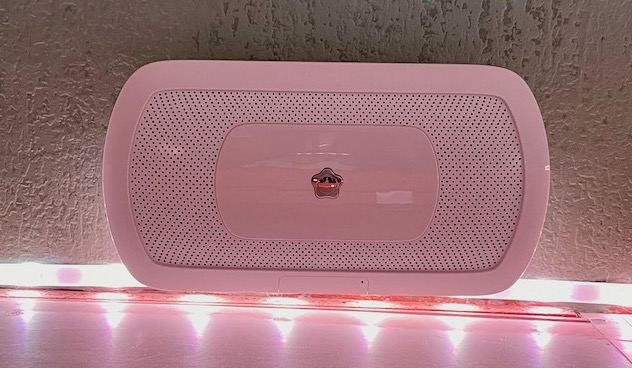
The devices in the kitchen (notice that when two or more light sources are grouped, they appear in the Home app as one unit turned on/off simultaneously )
